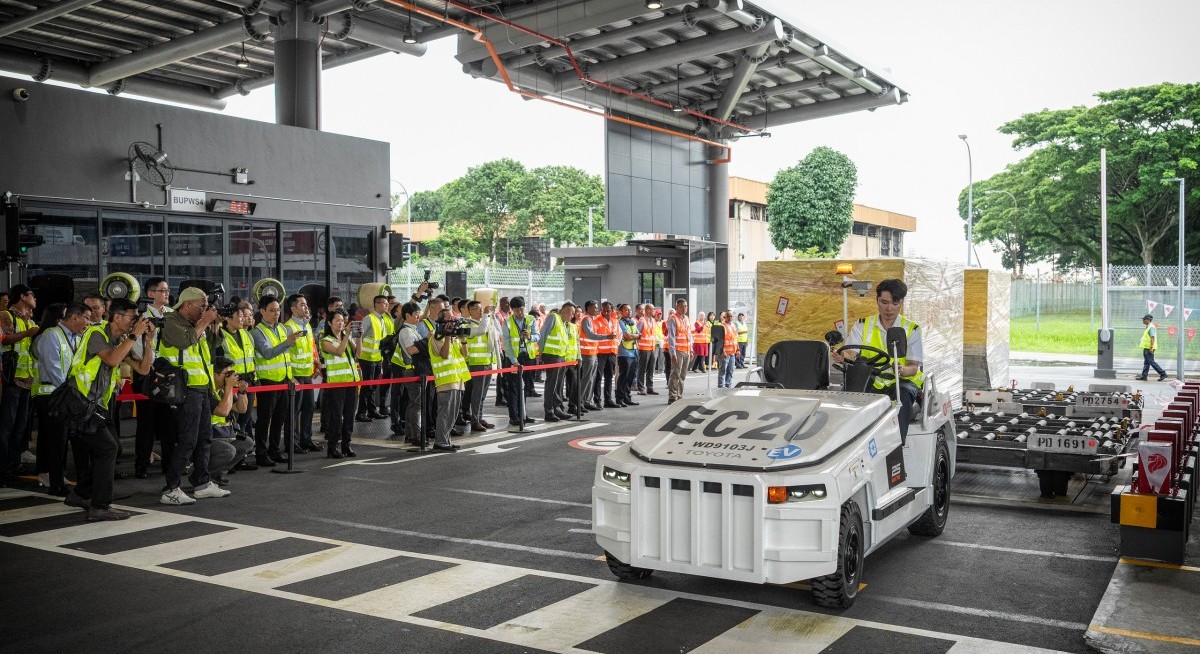The handling centre, located at SATS cargo’s airfreight terminal, will cover an area of 3,000 square metres or about half the size of a soccer field. It will be active 24/7 and be operated by SATS Singapore Hub.
SATS established the SATS Singapore Hub on Oct 1, 2024 as a business division to support airport operations in Singapore’s air hub, which groups Changi Airport, Seletar Airport and the aviation industries at these gateways.
With six lanes and six weighing stations, the BUP handling centre will enable freight forwarders, which are cargo towing vehicles operated by a single driver or more, to process and weigh their BUPs at a single location, thus reducing waiting times.
Previously, freight forwarders were served by two weighing stations at different parts of the airfreight terminal, without dedicated lanes for processing cargo. At the BUP handling centre, they now simply need to haul their loads onto weighing stations conveniently built into the ground, thus streamlining the process.
See also: India plans more incentives for aircraft leasing in tax oasis — Bloomberg
With this, SATS notes that cargo can be accepted closer to an aircraft’s scheduled time of departure, which allows the group to offer its customers greater flexibility and quicker response times.
“The BUP handling centre frees up capacity at our existing airfreight terminals and ease congestion of roadways during peak periods and allows us to testbed processes that could be introduced at Changi Airport’s Terminal 5 (T5) and the Changi East Industrial Zone in the future,” says SATS Singapore Hub chief executive officer (CEO), Henry Low, at the facility’s opening on Aug 5.
The handling centre’s unveiling comes after the previously declared investment of $250 million to upgrade SATS’ ground operations and cargo handling infrastructure at Changi Airport.
See also: Emirates dashes hope for new Airbus A350 order amid engine woes
Of the full amount, $150 million will go towards the renewal and expansion of the group’s Singapore Hub ground support equipment (GSE) fleet over the next five years until 2029, while $100 million will be spent on bolstering cargo operations across existing air freight terminals from 2025 to 2026.
SATS group CEO Kerry Mok says: “Cargo is still going to grow, no matter what. We're assuming that globally, cargo is going to grow 3% to 4%, and if Singapore is going to have its share of cargo, that is the volume that we will be designing for and to be able to handle before T5 comes along.”
Mok adds that while SATS will see a buildup of its workforce before T5 comes online, the group will also look to technological solutions for better efficiency and to reduce over-reliance on manpower.
“Our roles in the future will change. I don't think SATS will see a doubling of head count, and also, T5’s design [I think] will be very different as well. It [the design] allows centralisation and the ability to, what I call, ‘risk-pool’ your functions and drive a high service level,” says Mok.
Shares in SATS closed four cents higher or 1.26% up at $3.22 on Aug 5.




